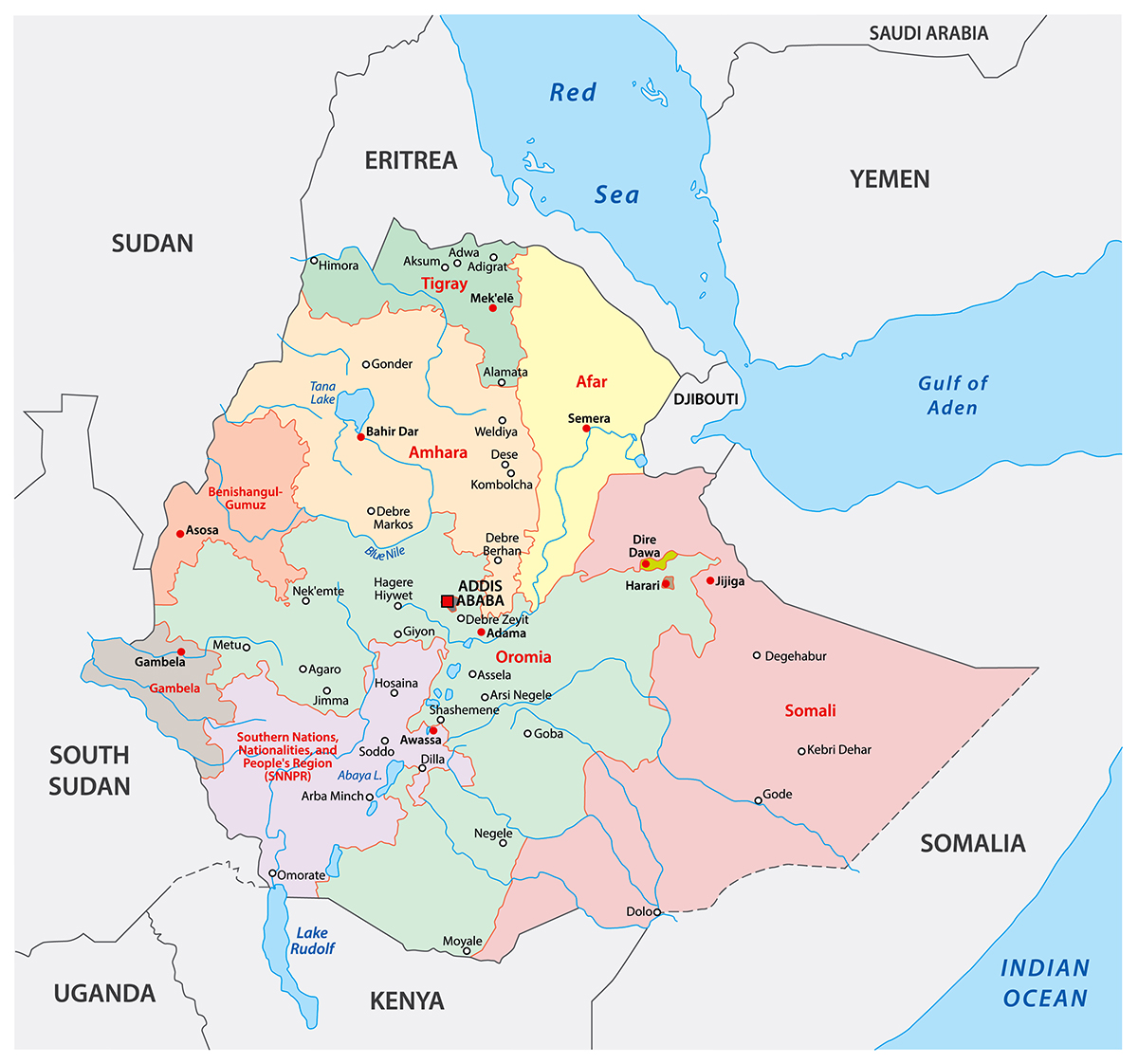
Professor Laura Justice
The Riveting Research in Early Childhood Education blog series is a succinct summary of a new study with compelling design and implications.
January 2022
By: Dr. Laura Justice
Research citation: Kim, J.H., Hailu, B. H., Rose, P.M. et al (2022). Persistent inequalities in early years’ access and learning: Evidence from large-scale expansion of pre-primary education in Ethiopia. Early Childhood Research Quarterly, 58, 103-114
A brief look at the study’s background
Expanding access to early care and education is a global priority, with the United Nations setting a goal for universal pre-primary education by 2030 (via its Sustainable Development Goal 4.2 on Education). Although some countries have achieved near-universal pre-primary education, many lower- and middle-income countries have very low levels of participation. For instance, in 2010 only 5% of children in Ethiopia participated in pre-primary education, leading to a nationwide reform movement focused on rapidly expanding pre-primary education, particularly for children who are ‘vulnerable and disadvantaged.’
Kim and colleagues’ study is highly innovative in its effort to assess the extent to which rapid, broad expansion of pre-primary education in Ethiopia via nationwide reform achieved the goal of reducing educational inequities (i.e., access to pre-primary education). Whereas many studies of pre-primary expansion have sought to document impacts of such reforms on children’s learning outcomes, very few have explored whether such reforms actually lead to the desired proximal goal of increasing equitable access to pre-primary programs.
On the one hand, broad expansion of pre-primary programs could improve equitable educational access if there are no significant differences in the background characteristics of children who are and are not served by the expanding program. On the other hand, if there are significant differences between children served and not served as the program expands, pre-primary expansion could actually increase educational inequities, paradoxically. Put simply, let’s say that program expansion disproportionately enrolls children from more highly resourced homes or children with more educated parents, then the reform effort actually has contributed to increased educational inequities, which is paradoxical to the reform effort’s intended goals.
States of Ethiopia map courtesy of World Atlas (click to enlarge)
How the study was designed and what it found
Kim and colleagues’ study made use of existing administrative data, which is referred to as secondary data analysis. They used nationwide school census data via Ethiopia’s Education Management Information System, with data representing 36,000 government primary schools for the period of 2010/11 to 2016/17. This period spans the introduction of the nationwide pre-primary reform (2010) and the successive six academic years. Kim and colleagues also analyzed regionally representative Early Grade Reading Assessment from a dataset acquired from the USAID Reading Network. This dataset provided reading-performance data (i.e., oral reading fluency) for 2010 and 2016, representing 9121 second graders and 8332 third graders from five regions of Ethiopia, commencing at the reform introduction in 2010 to six years later.
Secondary data analysis using these datasets showed foremost that there was substantial expansion of pre-primary participation from 2010 to 2016, from 5% participation to 46%. At least nominally, the reform effort led to vast expansion of pre-primary participation. However, Kim and colleagues were interested in determining whether this expansion was equitable, and subsequent analysis indicated that it was not, with their analyses finding huge variation in enrollment across regions. For instance, by 2016/17 93% of children in Tigray participated in pre-primary education as compared to fewer than 10% in Afar. This finding shows inequities in enrollment as a function of regionality. Moreover, examination of the determinants of pre-primary participation showed that children were more likely to enroll as a function of several familial characteristics, most prominently mothers’ educational level, home learning environment, and rurality.
That is, children with more educated mothers, more vibrant home learning resources, and who resided in urban settings were more likely to enroll in pre-primary education than children with less educated mothers, less vibrant home learning resources, and who resided in rural settings.
Interestingly, these characteristics predicted pre-primary enrollment in both 2010 and 2016, indicating that despite nationwide reform, there was no change in patterns of participation.
Why this study matters
Currently there is significant interest in the potential for pre-primary participation to improve children’s readiness for primary schooling and overall academic achievement. Economic analyses suggest that investments in pre-primary education can provide substantial return-on-investment in such forms as reduced juvenile delinquency and improved post-secondary participation. Consequently, across the globe many countries are pursuing educational reforms to enhance pre-primary participation, as occurred in Ethiopia in 2010.
Educational reforms can have unintended consequences; thus, it is vital that scientists carefully assess the outcomes of such reforms. For instance, it is possible for an educational reform directed at improving educational equity to have the opposite effect of increased educational inequity, which would be not only unintended but paradoxical given the intent of the reform. In this vein, Kim and colleagues examined whether Ethiopia’s nationwide reform to expand pre-primary education achieved the goal of increasing educational equity, finding that pre-primary enrollment increased only in some regions and primarily for children from relatively more advantaged homes – that is, homes in which mothers were more educated and which provided more learning resources. Children in urban settings also benefitted relatively more from the nationwide reform.
Importantly, science paves the way for thoughtful consideration of how to enhance reform efforts to meet their intended goal. The Ethiopian pre-primary reform was effective in substantially increasing pre-primary enrollment, thus putting in place the nationwide infrastructure for ongoing expansion. Nonetheless, as Kim and colleagues emphasize, future efforts to increase enrollment must explicitly attend to improving participation by ‘the most vulnerable’ children.
Presumably, outreach to families of vulnerable children will need to look different than the outreach strategies that have been effective for less vulnerable children and their families, and the field of implementation science offers research-based strategies to improve the scaling of educational interventions.

Professor Laura Justice
Subscribe to the monthly Riveting Research blogs, and get an early look at some of the coolest new early childhood research.
By submitting this form, you are consenting to receive marketing emails from: . You can revoke your consent to receive emails at any time by using the SafeUnsubscribe® link, found at the bottom of every email. Emails are serviced by Constant Contact



